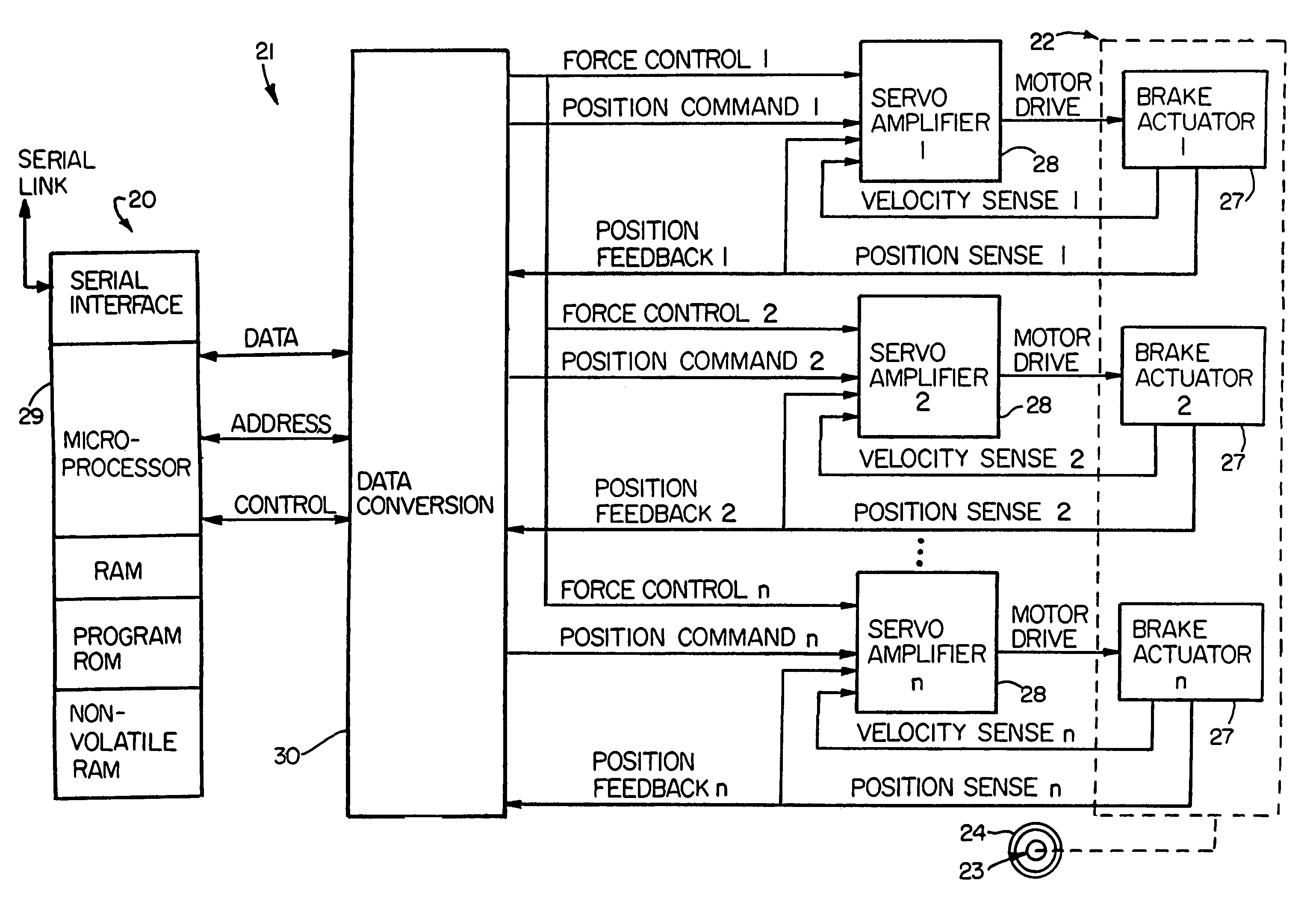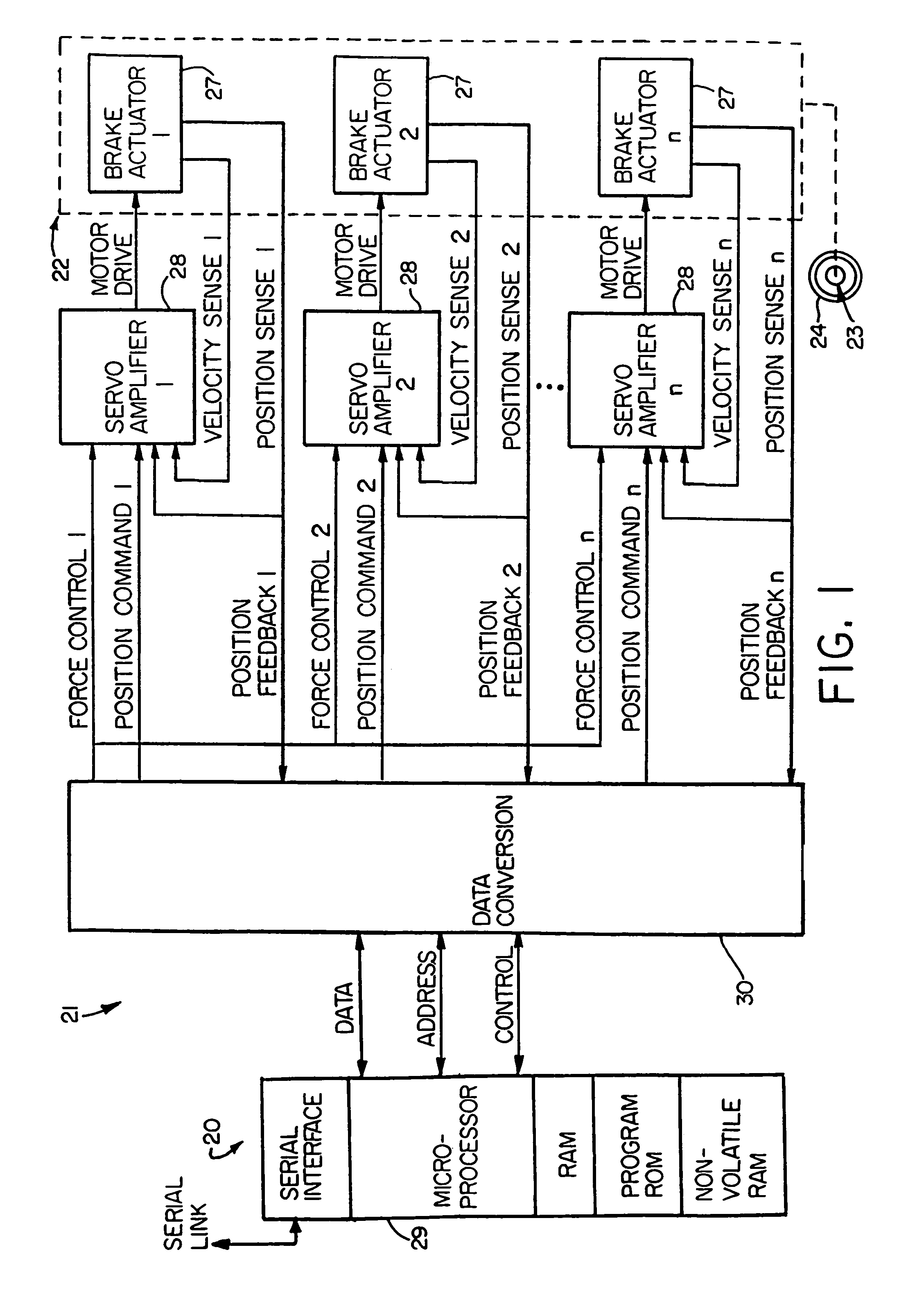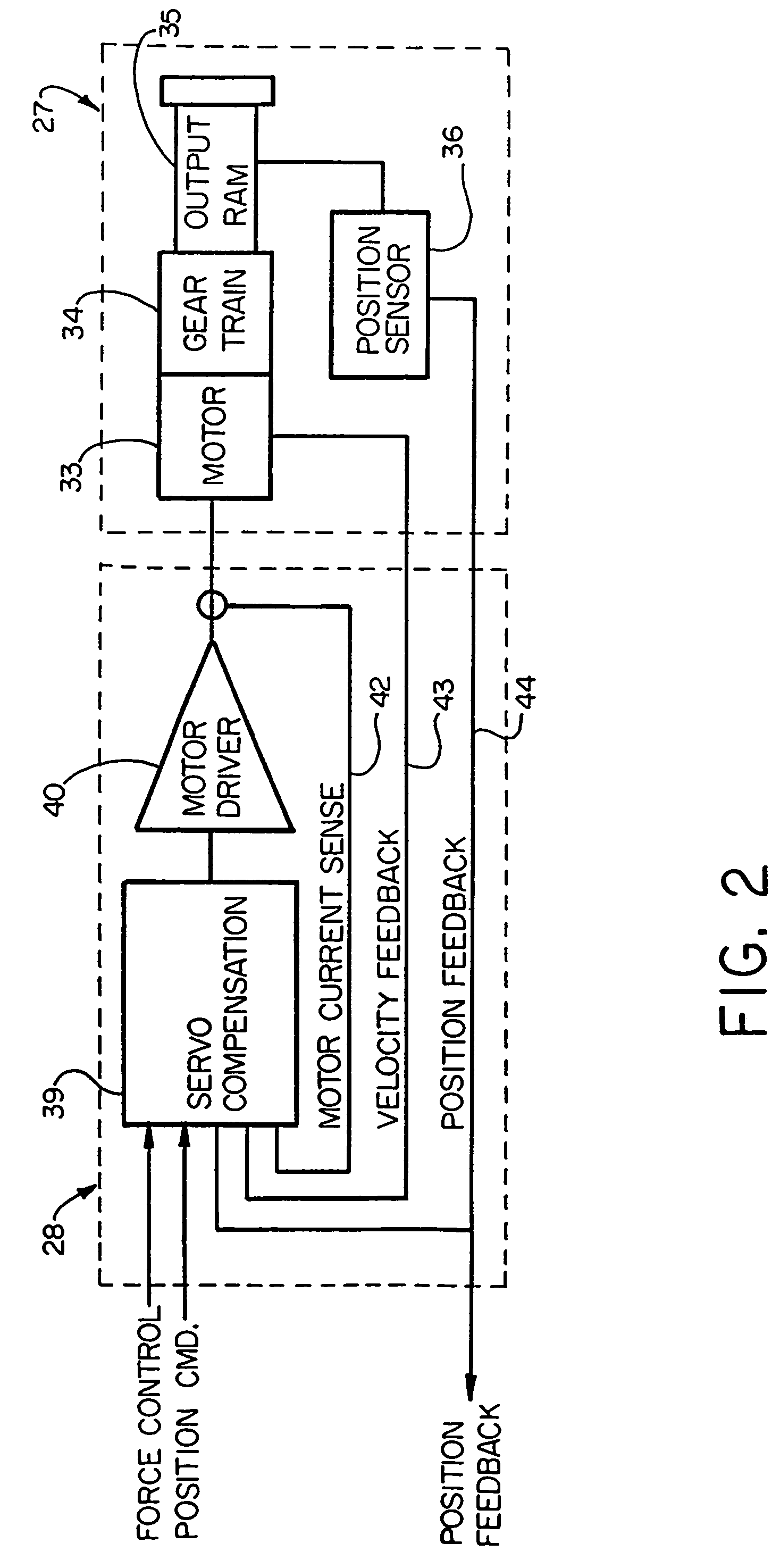Electronic aircraft braking system with brake wear measurement, running clearance adjustment and plural electric motor-actuator ram assemblies
a technology of electric motor and actuator ram, which is applied in the direction of braking system, aircraft braking arrangement, transportation and packaging, etc., can solve the problems of inherently imprecise, increased running clearance of actuator ram, and devices adding weight and complexity to the braking system
- Summary
- Abstract
- Description
- Claims
- Application Information
AI Technical Summary
Benefits of technology
Problems solved by technology
Method used
Image
Examples
Embodiment Construction
[0041]Referring now in detail to the drawings, FIG. 1 diagrammatically illustrates an exemplary multi-actuator computer controlled brake actuation system 20 to which the principles of the invention may be applied. The major functions of the system 20 are performed by a controller 21 and a brake actuator assembly 22. The brake actuator assembly 22 may be mounted in a conventional manner on a wheel and brake assembly 23 to apply and release braking force on a rotatable wheel 24 of such wheel and brake assembly. The present invention is particularly suited for use in aircraft braking systems, as will be appreciated by those skilled in the art.
[0042]Because the invention was conceived and developed for use in an aircraft braking system and particularly in association with the system 20, it will be herein described chiefly in this context. However, the principles of the invention in their broader aspects can be adapted to other types of systems including, for example, hydraulic systems w...
PUM
 Login to View More
Login to View More Abstract
Description
Claims
Application Information
 Login to View More
Login to View More - R&D
- Intellectual Property
- Life Sciences
- Materials
- Tech Scout
- Unparalleled Data Quality
- Higher Quality Content
- 60% Fewer Hallucinations
Browse by: Latest US Patents, China's latest patents, Technical Efficacy Thesaurus, Application Domain, Technology Topic, Popular Technical Reports.
© 2025 PatSnap. All rights reserved.Legal|Privacy policy|Modern Slavery Act Transparency Statement|Sitemap|About US| Contact US: help@patsnap.com



